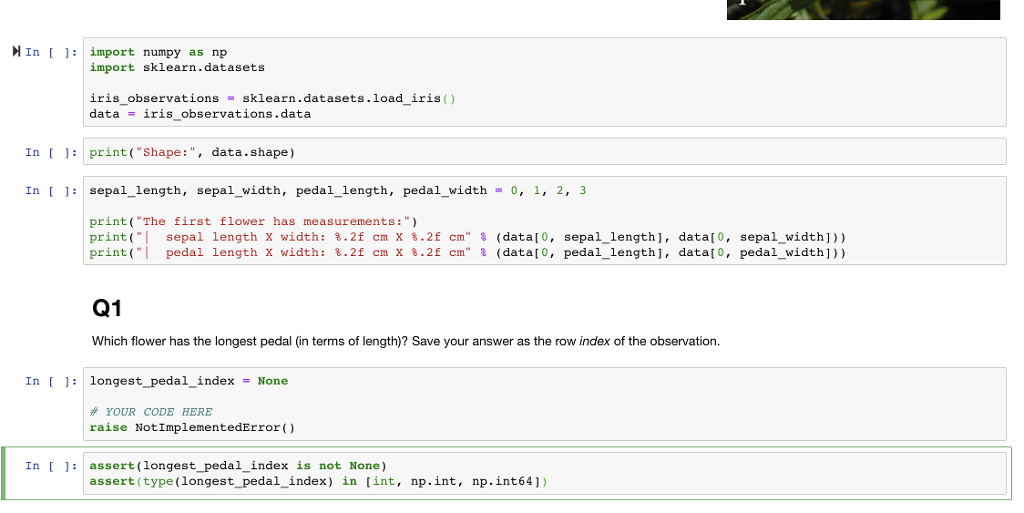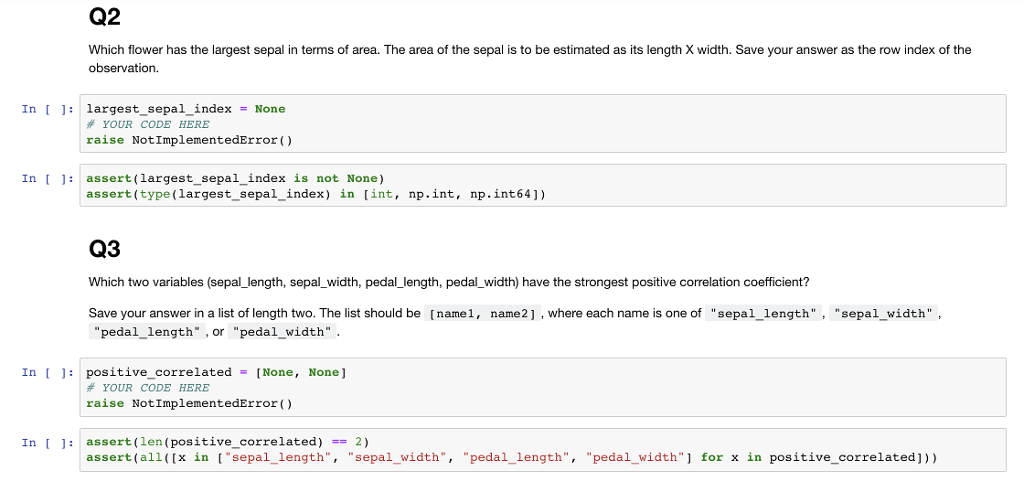Answered step by step
Verified Expert Solution
Question
1 Approved Answer
MIn import numpy as np import sklearn.datasets iris_observations sklearn.datasets.load iris() data iris_observations.data In print( Shape:, data.shape) In : sepal_length, sepal_width, pedal_length, pedal_width - 0, 1.



Step by Step Solution
There are 3 Steps involved in it
Step: 1

Get Instant Access to Expert-Tailored Solutions
See step-by-step solutions with expert insights and AI powered tools for academic success
Step: 2

Step: 3

Ace Your Homework with AI
Get the answers you need in no time with our AI-driven, step-by-step assistance
Get Started


